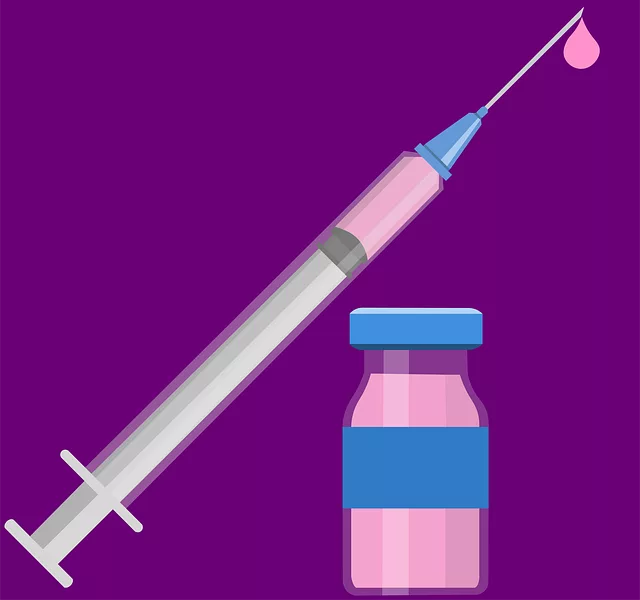Post-Traumatic Stress Disorder (PTSD) is a complex mental health condition affecting individuals who have experienced traumatic events. This article explores various therapeutic approaches designed to help those with PTSD navigate their symptoms and achieve recovery. From traditional talk therapies like Cognitive Behavioral Therapy (CBT) to innovative techniques such as Eye Movement Desensitization and Reprocessing (EMDR), and even alternative treatments like art therapy, we delve into effective strategies for managing and overcoming PTSD, offering hope for better mental well-being. Discover proven methods for PTSD treatment and recovery in this comprehensive guide.
Understanding PTSD: Symptoms and Causes

Post-Traumatic Stress Disorder (PTSD) is a complex mental health condition that can develop after an individual experiences or witnesses a traumatic event. Understanding PTSD involves recognizing its symptoms, which can vary widely from person to person but often include flashbacks, nightmares, intense distress, and avoidance behaviors related to the trauma. These symptoms can significantly impact daily functioning and overall quality of life.
Several factors contribute to the development of PTSD, including genetic predisposition, previous traumatic experiences, and environmental stressors. Traumatic events such as military combat, accidents, natural disasters, or violent assaults can trigger PTSD. It’s important to note that PTSD treatment is available and effective, offering various therapeutic approaches tailored to address the unique needs of each individual affected by this condition.
Traditional Therapeutic Approaches

Traditional therapeutic approaches for PTSD often involve psychotherapy, such as Cognitive Behavioural Therapy (CBT) and Eye Movement Desensitisation and Reprocessing (EMDR). CBT helps individuals identify and challenge negative thought patterns related to their traumatic experiences, while EMDR facilitates the processing of repressed memories. These methods are widely recognised as effective PTSD treatment modalities.
These traditional approaches focus on helping patients confront and process their traumatic memories in a safe and controlled environment. Through various techniques, they aim to reduce symptoms like flashbacks, nightmares, and heightened anxiety, ultimately improving the individual’s overall quality of life.
Cognitive Behavioral Therapy (CBT) for PTSD

Cognitive Behavioral Therapy (CBT) is a widely recognized and effective PTSD treatment approach. This therapy focuses on identifying and changing negative thought patterns and behaviors associated with traumatic experiences, helping individuals manage their symptoms and gain control over their lives. CBT for PTSD involves various techniques, such as exposure therapy, cognitive restructuring, and stress management skills, to assist those affected in confronting and overcoming their fears and flashbacks.
By challenging unhelpful beliefs and replacing them with more realistic and positive ones, CBT enables people with PTSD to process and integrate their traumatic memories healthily. This process facilitates a reduction in anxiety, depression, and other symptoms, allowing individuals to lead more fulfilling lives. Numerous studies have proven the efficacy of CBT in treating PTSD, making it a preferred choice for many mental health professionals as part of a comprehensive PTSD treatment plan.
Eye Movement Desensitization and Reprocessing (EMDR)

Eye Movement Desensitization and Reprocessing (EMDR) is a well-established therapeutic approach for Post-Traumatic Stress Disorder (PTSD). This innovative method helps individuals process and overcome distressing memories, focusing on the connection between traumatic events and subsequent emotional responses. EMDR therapy involves a structured eight-phase treatment plan that encourages patients to recall their trauma while engaging in bilateral stimulation, typically through side-to-side eye movements, auditory tones, or tactile taps. This dual focus allows the brain to process and integrate the traumatic memory, reducing its power over the individual’s emotional state.
EMDR has gained significant recognition as an effective PTSD treatment due to its ability to desensitize patients to traumatic memories. By revisiting and reprocessing these memories, individuals can learn to manage their reactions and reduce the intensity of associated symptoms. Research supports the efficacy of EMDR, demonstrating its success in helping people with PTSD regain control over their lives and improve overall well-being. This approach offers a promising avenue for those seeking relief from the debilitating effects of trauma, providing a more comprehensive and holistic healing process.
Alternative Therapies: Art, Music, and Animal-Assisted Therapy

Alternative therapies have emerged as valuable tools in the complex landscape of PTSD treatment, offering unique and often innovative approaches to healing. Art therapy provides a creative outlet for individuals to express their trauma-related experiences and emotions in a non-verbal manner, fostering self-reflection and personal growth. Similarly, music therapy has shown promise in reducing symptoms of PTSD by engaging the brain’s reward system and promoting relaxation through rhythm and melody.
Animal-assisted therapy is another promising avenue, where interacting with animals like dogs or horses can enhance social interaction, reduce feelings of isolation, and lower anxiety levels. These alternative methods complement traditional talk therapies, catering to individuals who may find verbal communication challenging. By integrating art, music, and animal interactions into treatment plans, therapists can tailor interventions to the unique needs and preferences of those struggling with PTSD, fostering a more holistic path to recovery.
Self-Care Strategies for Management and Recovery

Self-care plays a pivotal role in managing and recovering from Post-Traumatic Stress Disorder (PTSD). Individuals with PTSD can benefit significantly from incorporating various self-care strategies into their daily routines. These include engaging in regular physical exercise, which has been shown to reduce symptoms of anxiety and depression while improving overall mood and sleep quality. Mindfulness practices, such as meditation or deep breathing exercises, can help individuals stay grounded in the present moment, reducing the intensity of traumatic memories and flashbacks.
Additionally, maintaining a structured daily routine can provide a sense of stability and control, which is often disrupted by PTSD symptoms. Adequate sleep, healthy eating habits, and limiting the consumption of alcohol or other substances are essential components of self-care for individuals with PTSD. Engaging in creative outlets like art therapy, music, or writing can also serve as therapeutic outlets, allowing individuals to process their experiences and emotions in a safe and controlled manner. These self-care practices, when integrated into PTSD treatment plans, can enhance overall healing and recovery.
